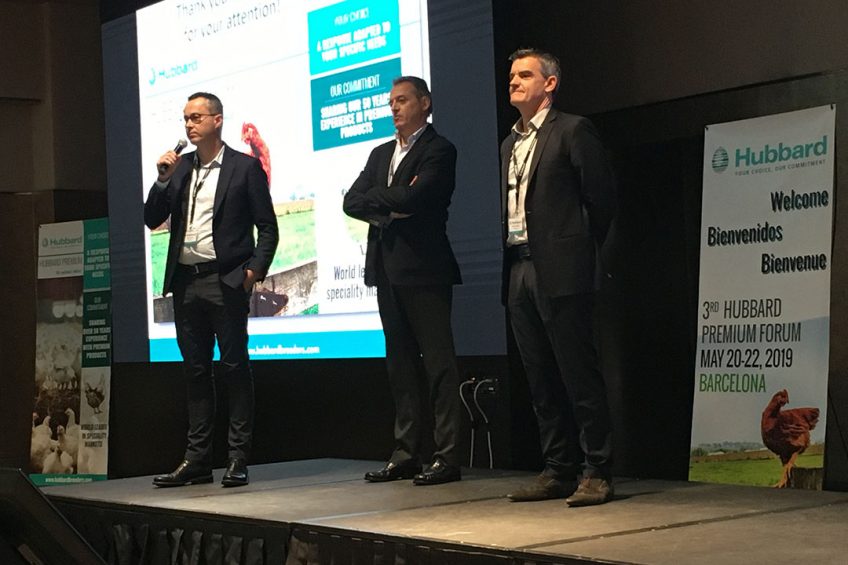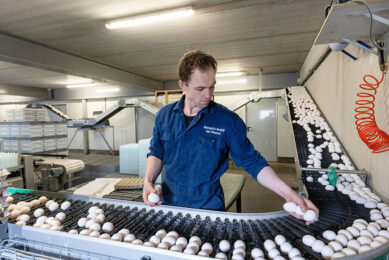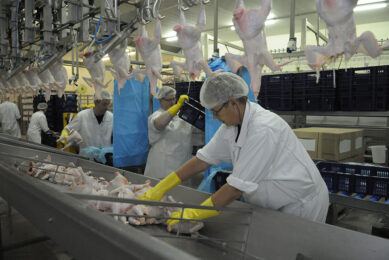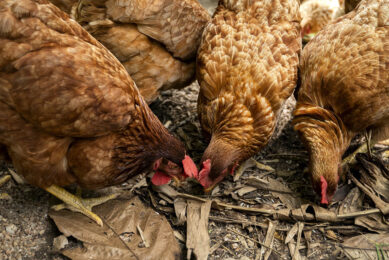Premiumisation to stay ahead of the pack

The development of premium broiler markets is dynamic, with a growth outlook from 8% now to 15-20% in 2025 in the EU. During the 3rd edition of the Hubbard premium forum experts shared their thoughts on market demands and the quest for new concepts covering the growing gap between conventional and premium concepts.
At the first Hubbard premium forum in 2015 concept broilers were only produced for top end consumers valuing the culinary experience and in countries with strong societal demands for animal welfare and subsequent proactive retailers to create a market space for premium chicken meat. Since then, broiler concepts really took off. Nowadays almost every major supermarket player offers segmentation in their private labels, ranging from value, to mid-range and from premium to niche. There is definitely more choice than ‘just’ chicken meat. The same premiumisation can be seen in food service companies and is also reflected in the interest for the 3rd Hubbard forum. With 180 attendees from 34 countries, the numbers doubled compared to 2015. Hubbard’s Paul van Boekholt: “Producing premium broilers is diverse, differing per country and per welfare scheme. That said, there is a well established market in France, the Netherlands and the UK. A new system was launched in Austria and countries like Denmark, Norway, Belgium and Germany are also developing fast.”
Premium breeding
Apart from the actual market developments, many producers, food companies and retailers are preparing for a more longer term future. For example; over a 100 companies made commitments within the US and Canada Global Animal Partnership programme. In Europe there is the ASK project for further and deeper development of more animal welfare friendly production. Both schemes ask for commitment now and action in the future. GAP outlines a replacement of chicken breeds that result in poor welfare outcomes by 2024 with breeds meeting specified welfare outcomes within its 5-Step rating programme. ASK demands an adoption of breeds that demonstrate higher welfare outcomes meeting the criteria of the RSPCA Broiler Breed Welfare Assessment Protocol and a maximum stocking density of 30 kg/m2 or less by 2026. Hubbard’s CEO Olivier Rochard: ‘’Because efficiency of conventional birds is improving year by year and average daily gain of slow growing concepts is limited, the gap between conventional and slow growing birds is widening. We have a dedicated R&D team and invest € 8 million in our premium breeding and selection programme in order to keep the cost price of premium meat close enough to conventional products. Furthermore, we continuously work on the genetics side to have a bird that fits a wide range of segments, being able to produce in a segment in between the ends of the spectrum.”

Poultry: Fastest growing market
When it comes to the global market development for animal protein, poultry is the fastest growing market. ‘’Even in more or less saturated markets as the EU there is still a big upside in per capita consumption”, says Rabobank expert Nan Dirk Mulder. In countries like the US, Israel and Australia per capita consumption is above 40 kg, the average EU consumption is only 23 kg. He expects a market growth of 1,3% per year till 2022. ‘’But within Europe, there will be a gradual shift, which has already started. Concept chicken production now makes up 8% of total EU production. When you look at individual countries; 40% of Dutch production is slower growing, 24% of the production in France and 11% in the UK. We are moving towards a new EU equilibrium where slow growing will be gaining traction in Northwest Europe and volume growth of standard chicken production will shift to Central and Eastern Europe.”
According to the Rabobank expert the industry in Northwest Europe is producing too much cheap bulk meat, at least from a strategic perspective. “There is an immense power-play going on in the value chain and the farmers are at the centre of the squeeze.” It is the changing society, with a growing concern in topics like animal welfare, environment, health and production methods, that offers opportunities for change. ‘’For the industry it’s a matter of following the change, but that needs a change internally as well. The time that production is done behind closed doors is over. Openness, active communication and a proactive stance in the debate on animal welfare is needed.”
Organic production
Concept broiler meat production comes at a premium, according to poultry economist Peter van Horne. ‘’The rise in cost price of producing meat with slower growing breeds amounts to at least 20% for the first improvements such as a 48 day growth period and lower stocking density and can go up all the way to 115% extra for organic production with free range access all the bells and whistles of organic feed and production parameters.” Rabobanks Nan Dirk Mulder adds: ‘’However, even with rising production costs there are ways to capture more value. The journey to higher margins starts with offering a premium chicken and continues with value added chicken, value added food and unique brands.” Product development, selling not plain meat but upgraded meat or even convenience products, is one way to go. Producing meat by taking into account social concerns such as antibiotic usage and animal welfare another. Mulder: ‘’We have to take into account that alternative (plant based) proteins will become more competitive as well, but if we look at the general trend in consumption towards premiumisation in products such as beers and coffee, there are plenty of opportunities. Especially if the industry offers more than an interchangeable and unidentifiable piece of protein.”












